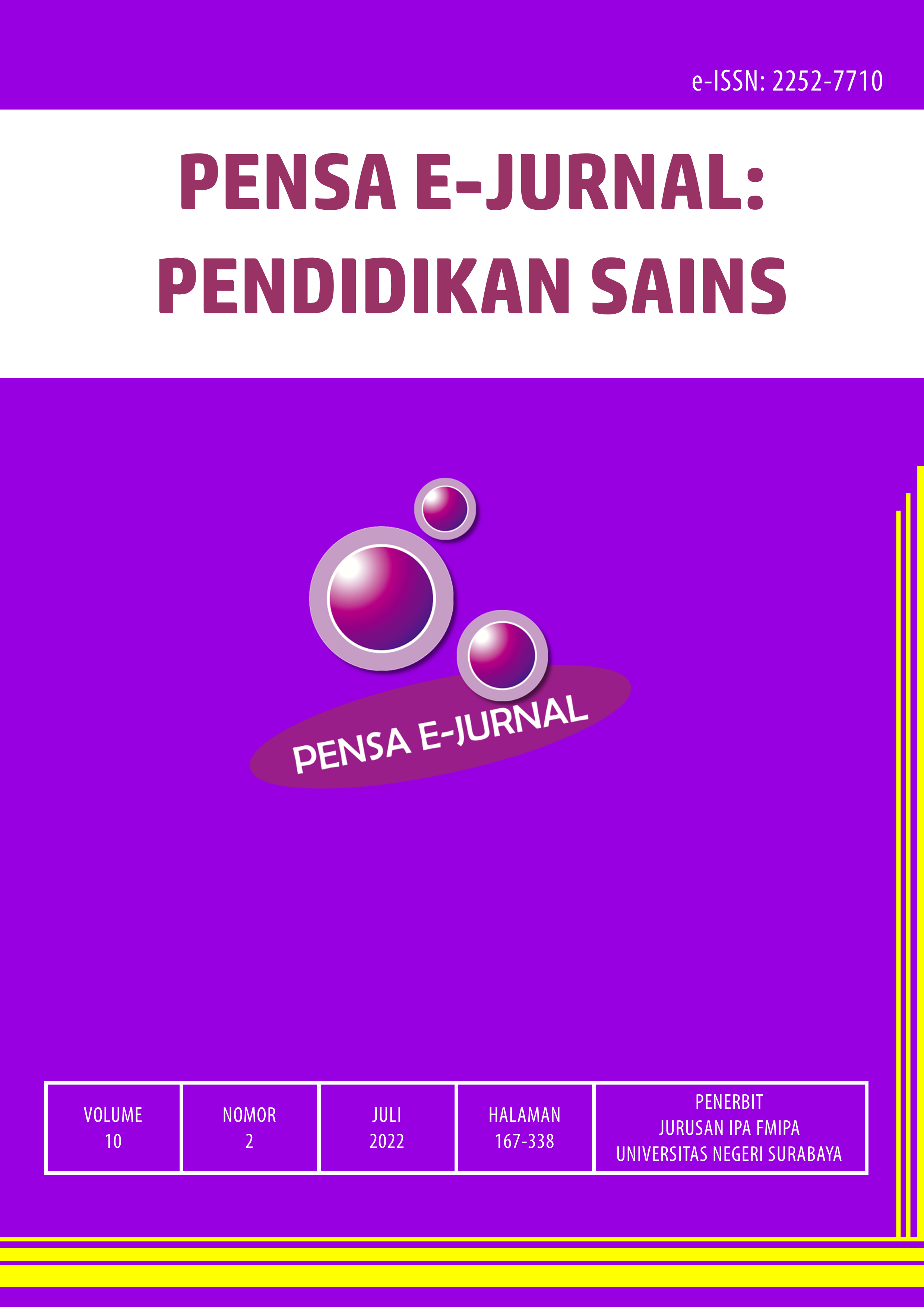PENGARUH MODEL FLIPPED CLASSROOM PADA PEMBELAJARAN JARAK JAUH DENGAN MATERI SISTEM PEREDARAN DARAH MANUSIA UNTUK MENINGKATKAN HASIL BELAJAR SISWA
DOI:
https://doi.org/10.26740/pensa.v10i2.45295Keywords:
flipped classroom, learning outcomes, distance learningAbstract
This study aimed to describe the effect of flipped classroom models on distance learning in human blood circulatory system to improve student learning outcomes. The study was quantitative research with one group pretest-posttest design. The research subjects were 30 students of class VIII-J SMPN 32 Surabaya. The data collection techniques used were test methods, pretest-posttest to measure student learning outcomes, and questionnaire methods consisted of student response questionnaires and learning implementation. The results of this research showed that there was an improvement of the students learning outcomes by using the flipped classroom model on distance learning with human blood circulatory system in accordance with the N-Gain result in high categories. So it can be concluded that the flipped classroom learning model on distance learning had a significant effect to improve student learning outcomes in the human blood circulatory system.
Downloads
Downloads
Published
How to Cite
Issue
Section
 Abstract views: 340
,
Abstract views: 340
, PDF Downloads: 186
PDF Downloads: 186

















